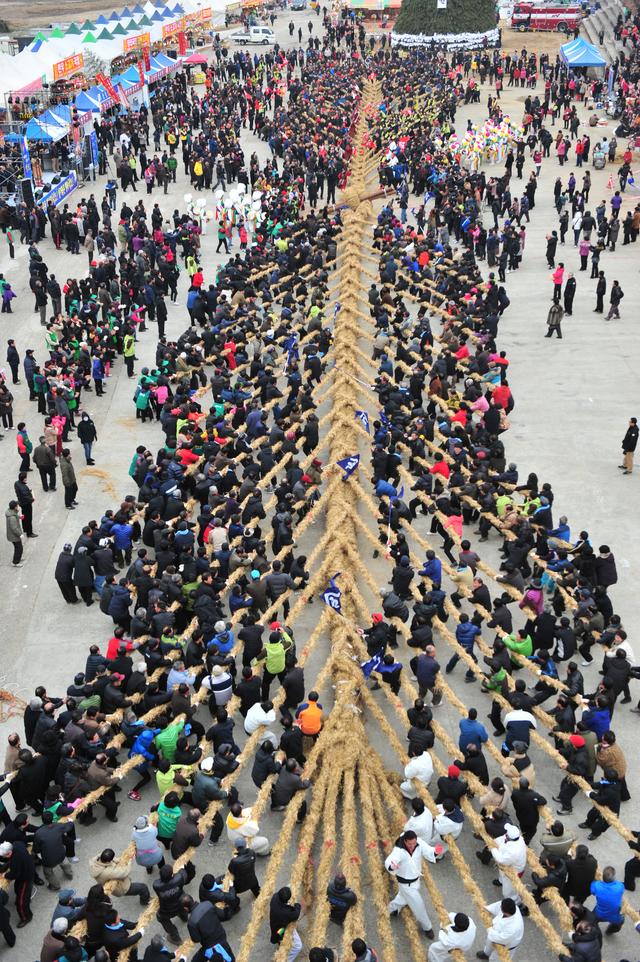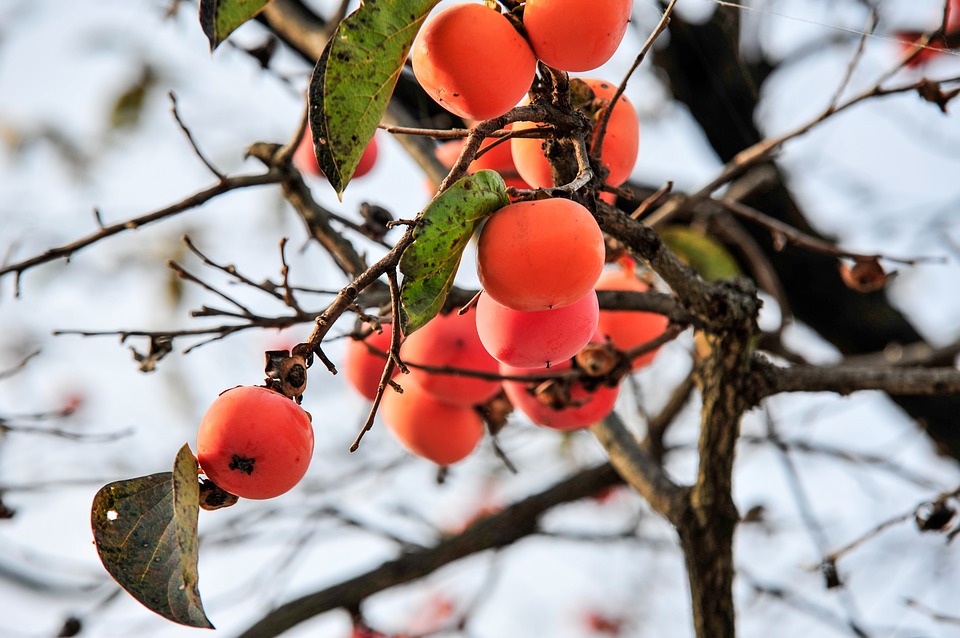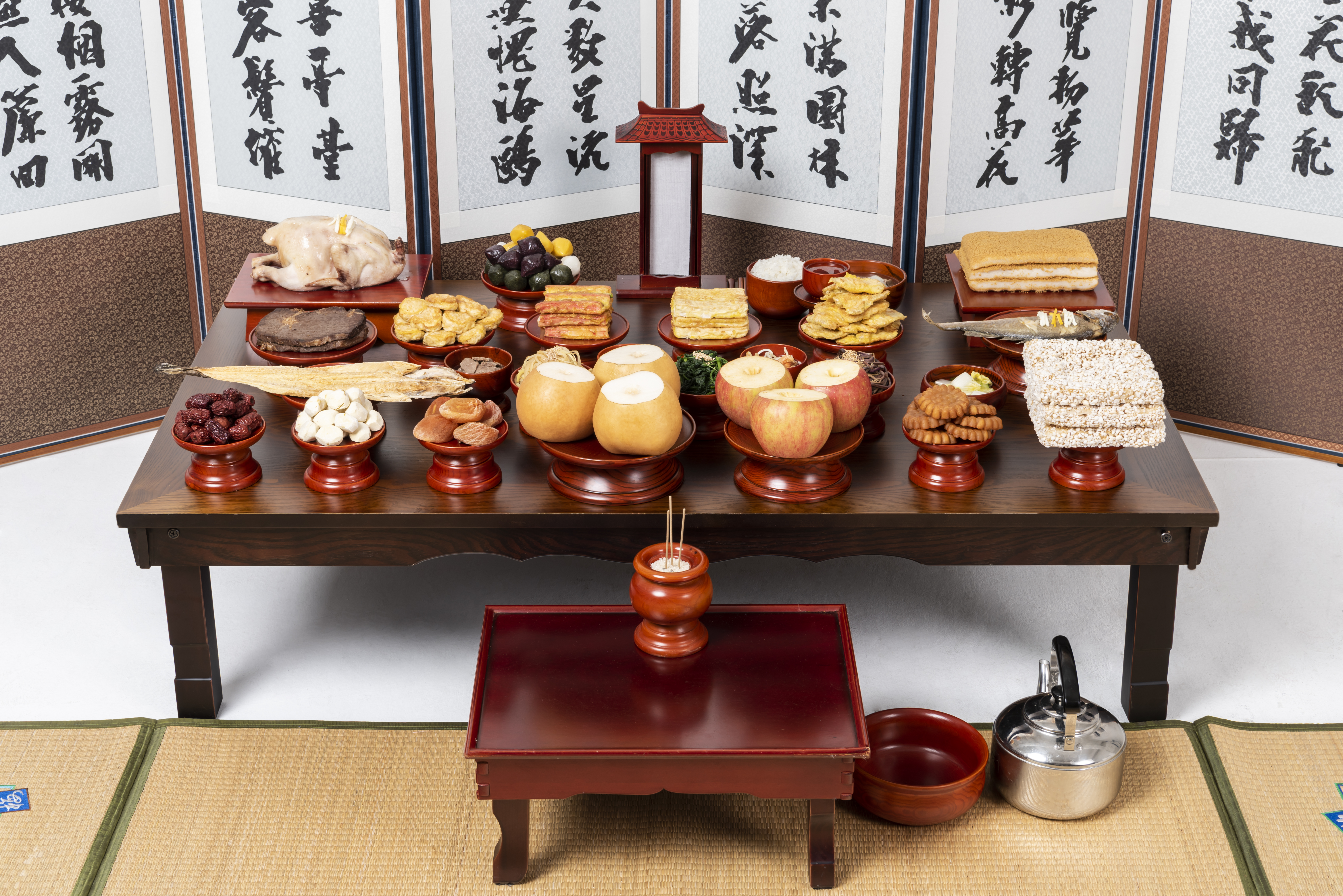A “Blessed Occasion” (Chuseok)
Chuseok is one of the most important holidays on the Korean calendar. This lunar calendar date – the 15th day of the 8th moon – falls on September 13 this year, making for a four-day long weekend (12–15). To commemorate this harvest festival, the Gwangju News reaches back to three articles from the past by three authors: Two Thousand Years’ Humanity by Choi Young-mi, September 2002; What Chuseok Has Meant to Koreans by Shin Sang-soon, September 2007; and Korea: Chuseok by Kim Minsu, September 2007. — Ed.
Two Thousand Years’ Humanity
Chuseok has been meaningful to Koreans for about 2,000 years. Though its origin is unclear, Chuseok is believed to have originated from a month-long weaving festival that was held in Gyeongju during the reign of King Yuri (r. 24–57 A.D.) of the Silla Kingdom. For the weaving contest, the king divided the city into two teams and appointed two princesses to lead them. The king announced the winning team, based on the amount of weaving completed, on the full moon of the eighth month, and the losing team had to provide food, drink, and entertainment for the winning team. A party involving the whole city ensued. In short, it was one of the most exciting and delightful gala days. It was much the same in the neighboring Baekjae and Goguryeo Kingdoms.
What Chuseok Has Meant to Koreans
Chuseok is one of two “blessed occasions” (myeongjeol, 명절). Seollal (설날, the lunar new year) is the other “blessed occasion.” Neither event can be talked about without referring to ancestor worship in Korea.
Chuseok has traditionally been an occasion to offer part of the new crop of grains and fruits to the ancestors. This ages-old rite was specifically called cheonsin (천신, offering the new crops to the gods). Sacrificial or ritual tables were set with an abundance of foods, which were later shared by all family members from far and near. At the same time, Chuseok has been a time for hardworking farmers to share both agricultural produce and the joy of the harvest. It was an occasion to foster the cooperative community spirit that was necessary in a pre-industrial agrarian society. Many folk games helped bolster this community spirit, for example, participating in a tug-of-war.

Jul-darigi (줄다리기, tug-of-war) was a competition that required community participation from beginning to end. Since hundreds of villagers participated on each team, the competition required a long and unbreakable rope. All the villagers needed to participate in the making of an adequate rope for the event. Each villager had his own specific job to do: One would make a slender straw rope while another would double these slender ropes to make a bigger and stronger one. Finally, when the rope was ready, the showdown would begin on a bright, moonlit night. All the villagers would participate with pride. Regardless of who won or lost, this traditional folk game has always served as a tool to cultivate community spirit.
As Korea has changed throughout the years, due to colonialism and followed by rapid Westernization, many of the unique customs and folk games have disappeared. With the advent of an urbanized modern society, change is inevitable. But it is the duty of every Korean to make an effort to continue our traditional folk games to enrich our lives and culture.

Korea: Chuseok
Chuseok, also known as the Harvest Moon Festival, is one of this nation’s most revered traditional holidays. Although Chuseok itself is only one day, this year the entire nation will enjoy a four-day vacation. Chuseok, which will begin at sundown on September 12th, falls on the 15th day of the eighth month of the Korean lunar calendar.
Originally observed officially during the Silla Kingdom (15 B.C. – 935 A.D.) to celebrate the fall harvest, Chuseok has become a day to honor friends, family, and respected elders. Once the holiday nears, Koreans from throughout the country will begin a mass exodus to their hometowns. After giving a series of traditional bows, returning children and grandchildren are typically bombarded with hugs, food, and questions about why they are not yet married. Usually, foods (such as fruits, meat, and canned tuna) and money (often in the form of department store gift certificates) are exchanged to mark the happy occasion.

Songpyeon rice cakesHowever, the hallmark of Chuseok is not the joyful festivities but the solemn remembrance of ancestors. In Korean culture, it is considered an honor and a duty to pay homage at the graves of our forefathers. Traditionally, families got together to perform a two-part memorial service for their departed loved ones. First, they clear the weeds from the ancestors’ graves in a ceremony called beolcho (벌초). Then, very early the next morning, the family begins the larger memorial service known as charye (차례).
On the morning of Chuseok, families enjoy a breakfast feast of songpyeon (송편, a crescent moon-shaped rice cake), soup, meat, fish, pancakes, and sikhye (식혜, a sweet rice drink) or sujeong-gwa (수정과, a cinnamon-flavored punch) for dessert. At the breakfast table, there is also a special glass of rice wine for the ancestors. The meal begins with several bows and a small prayer giving thanks for the sacrifices and contributions of the ancestors. After the meal, the men typically take part of the breakfast meal to the gravesite of their most recent ancestors (seongmyo, 성묘).
In today’s modern, individualistic world, there has been a change in the way some people celebrate Chuseok. Instead of returning home to respect ancestors, some young people treat Chuseok as a time to travel throughout the world. However, for the most part, Chuseok is still seen as a sacred time to honor ancestors and visit family.
Arranged by David Shaffer





